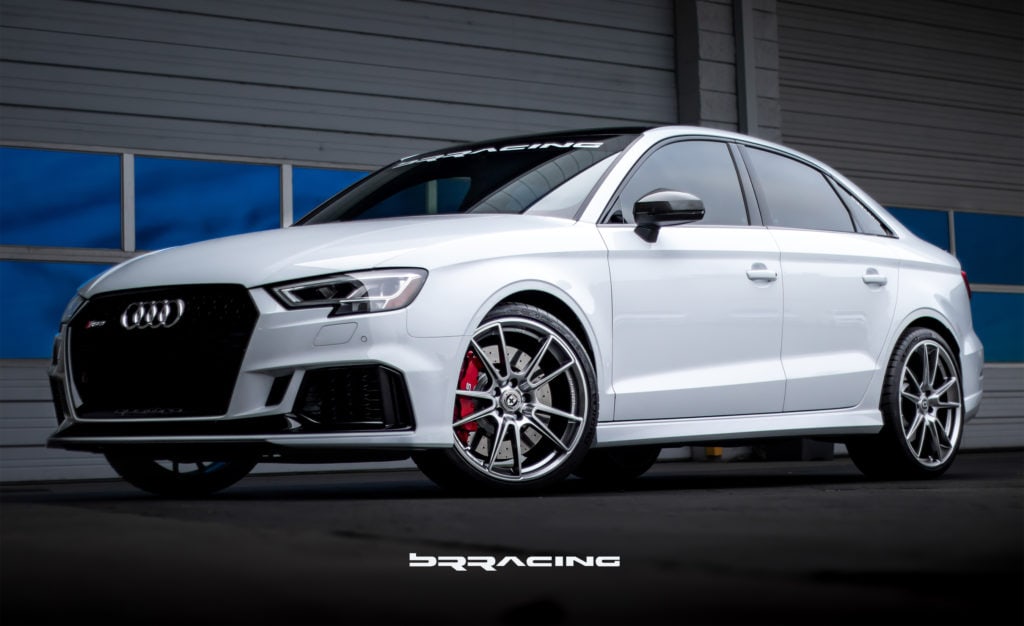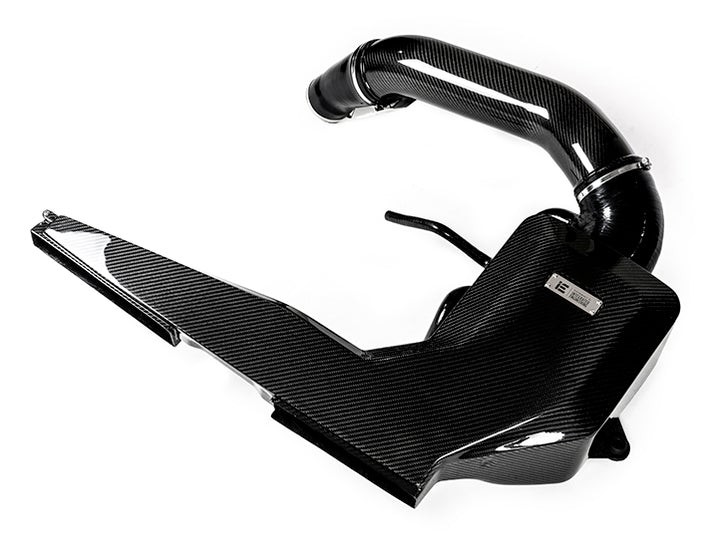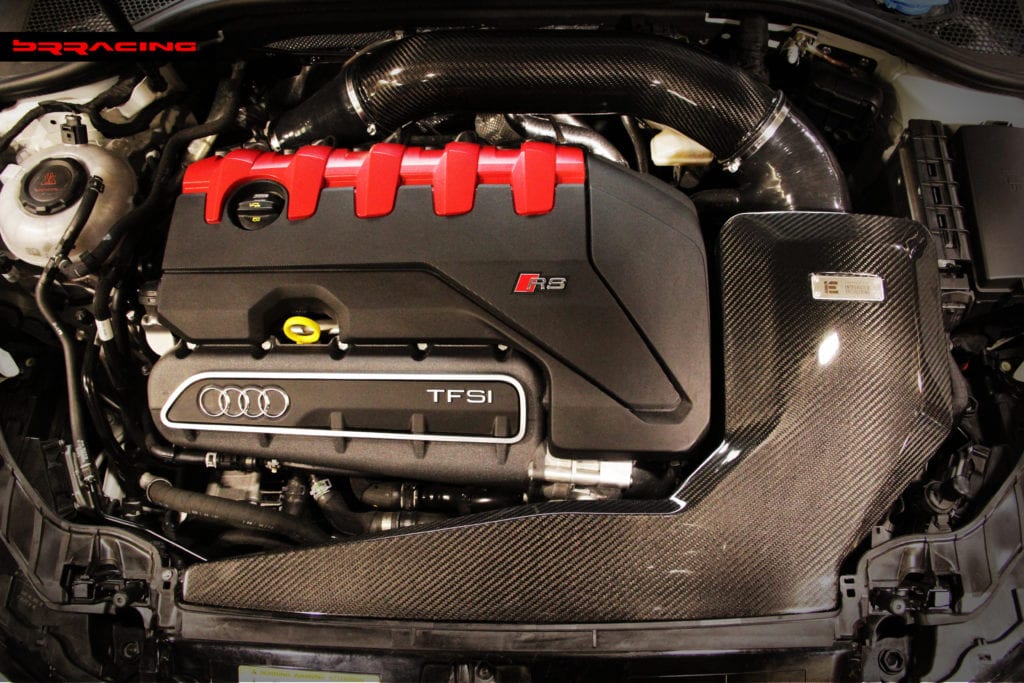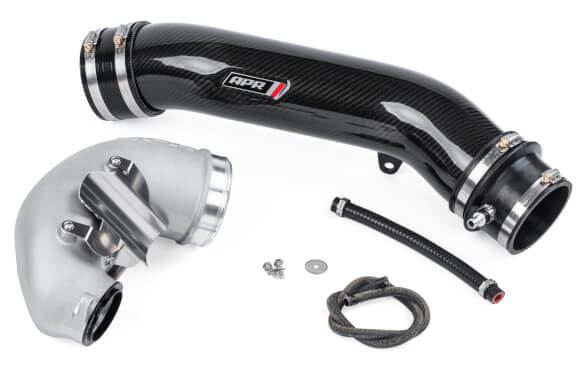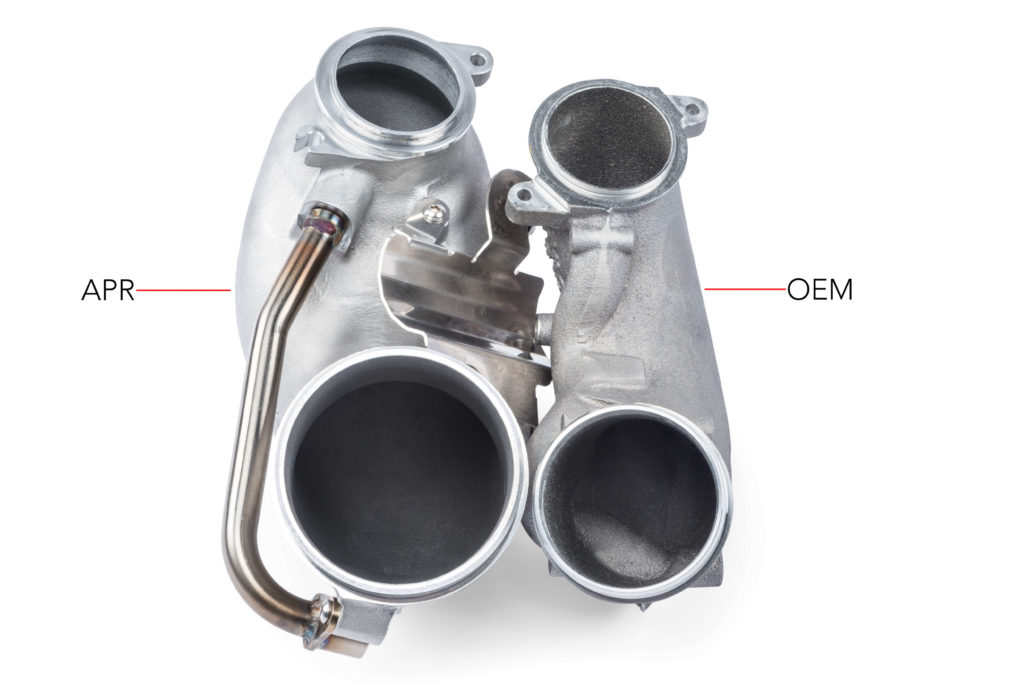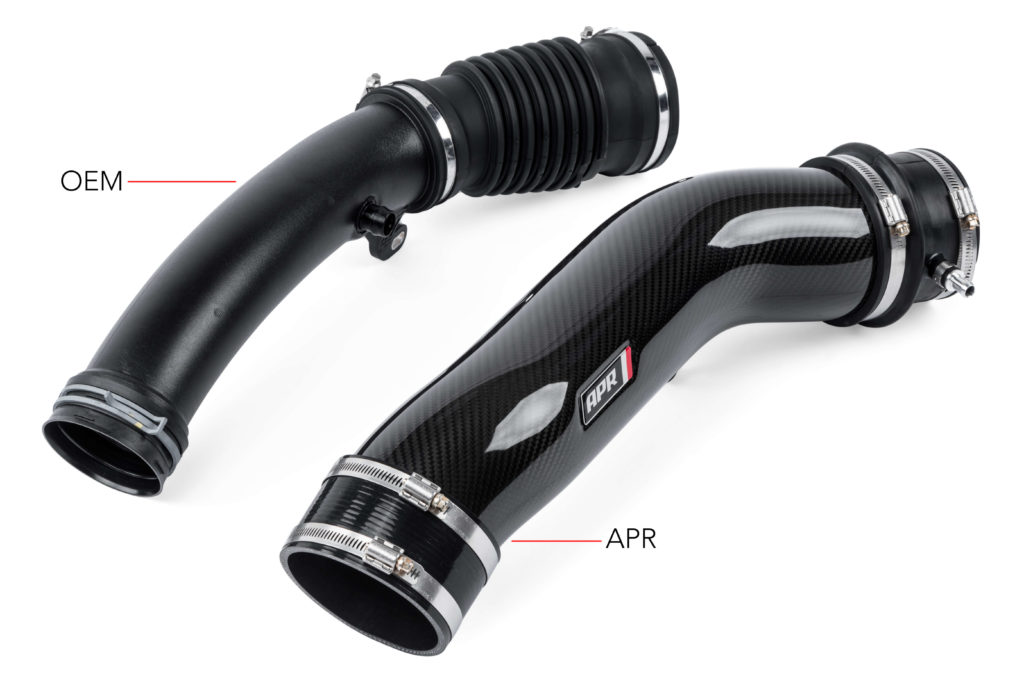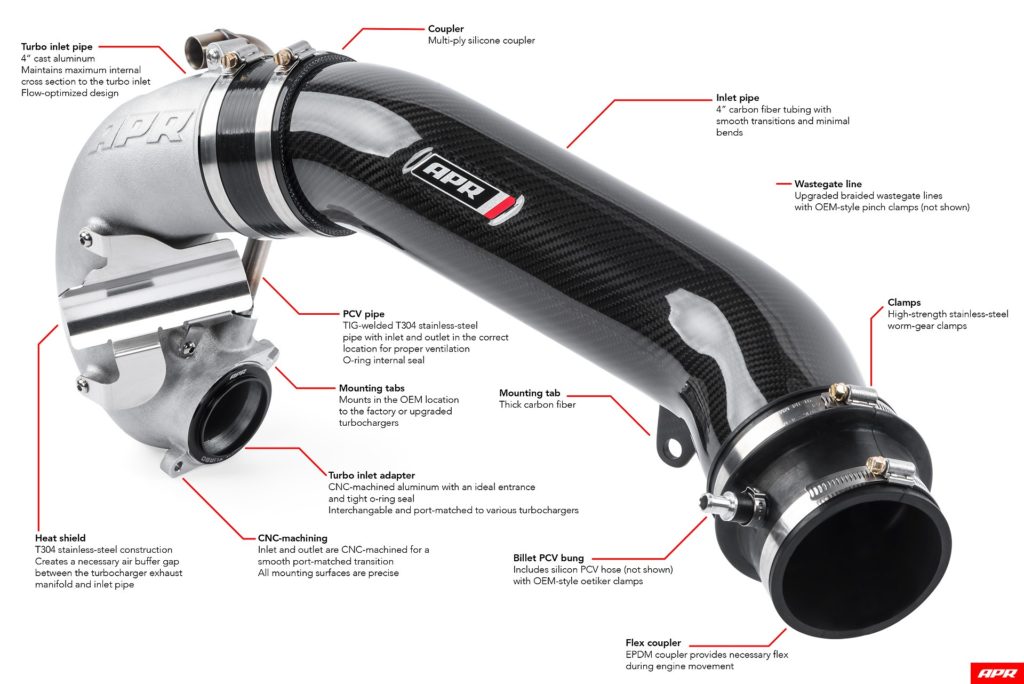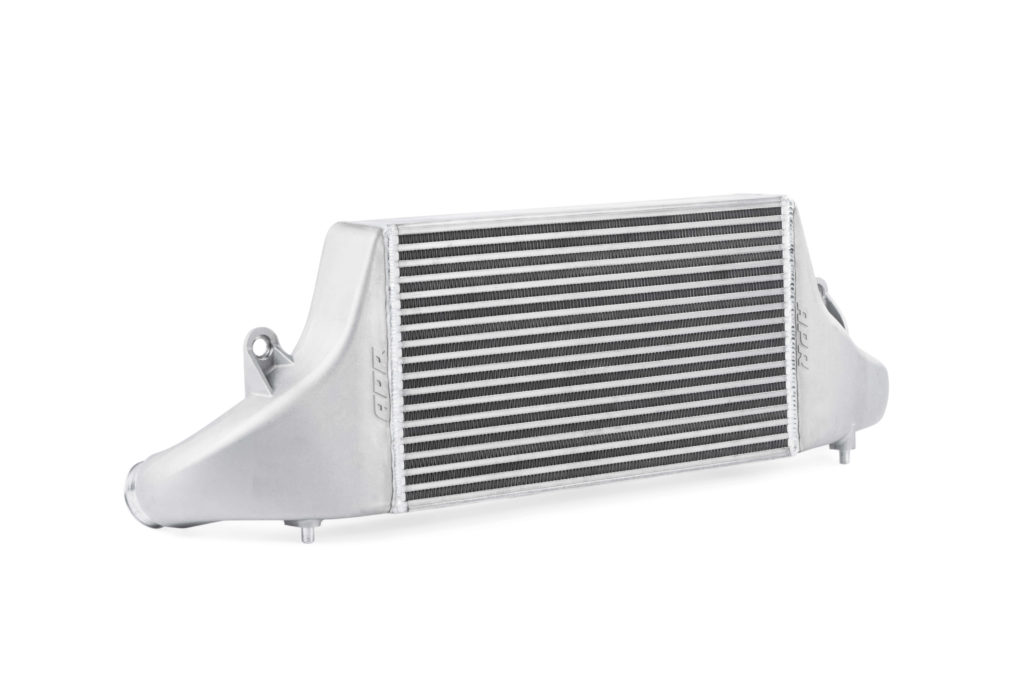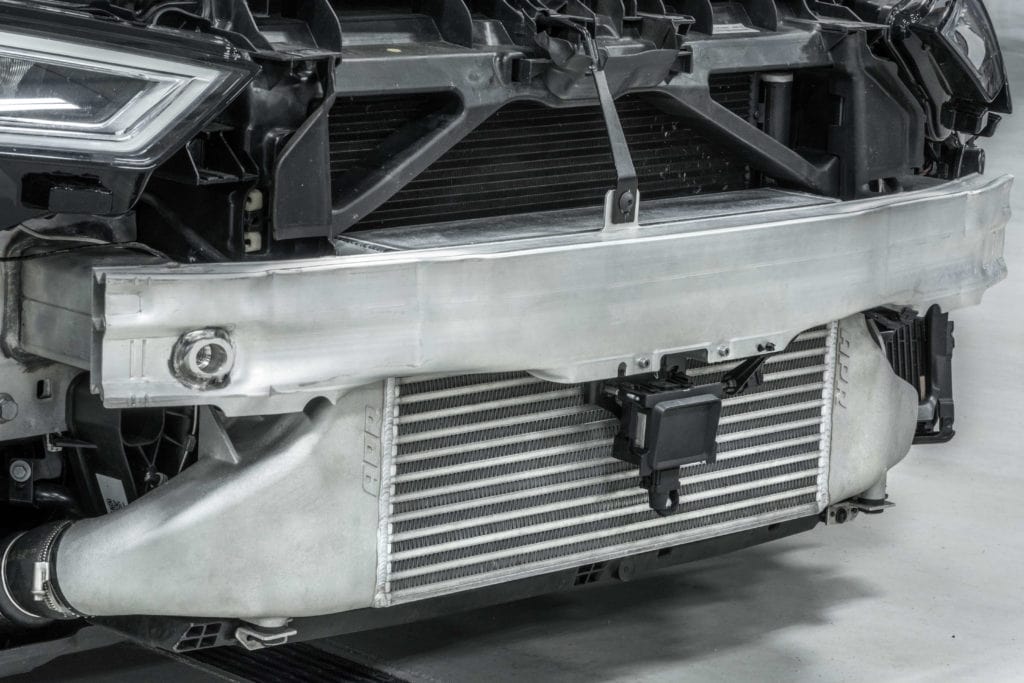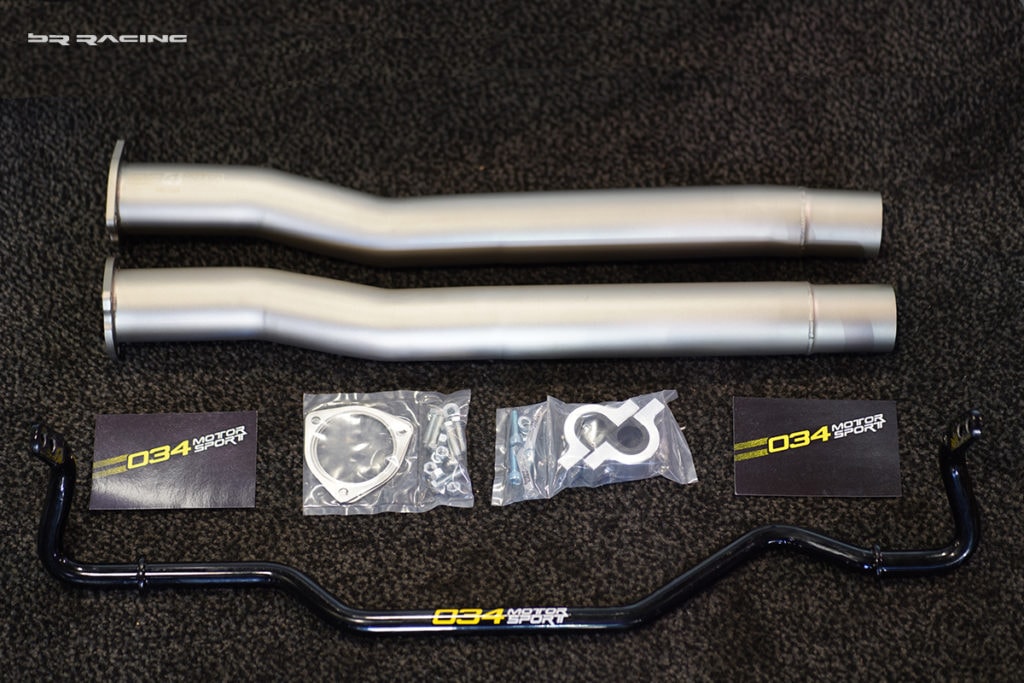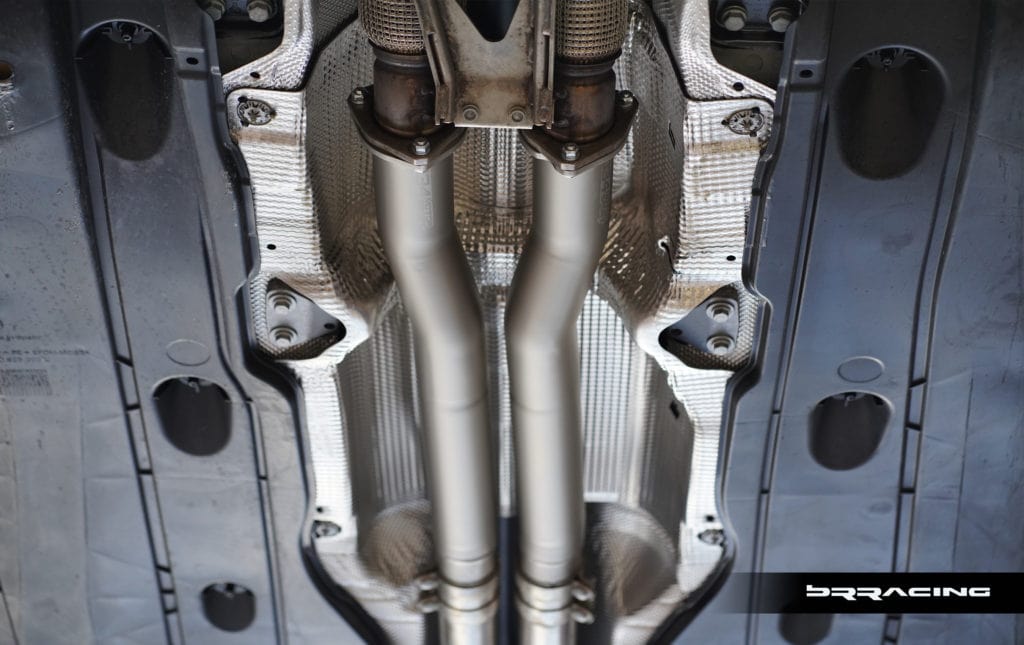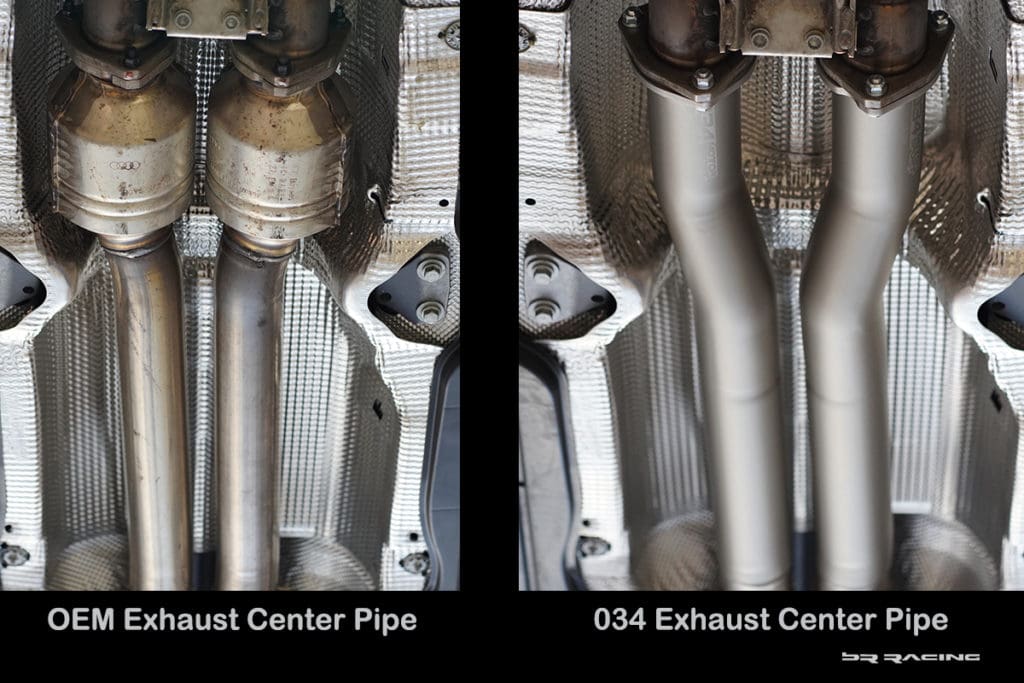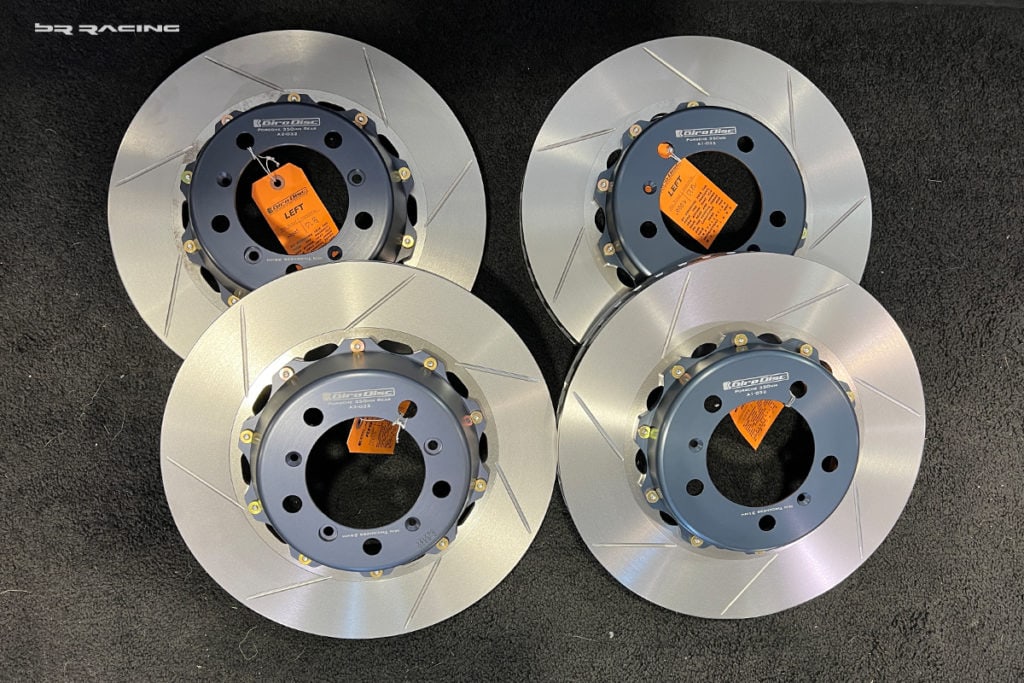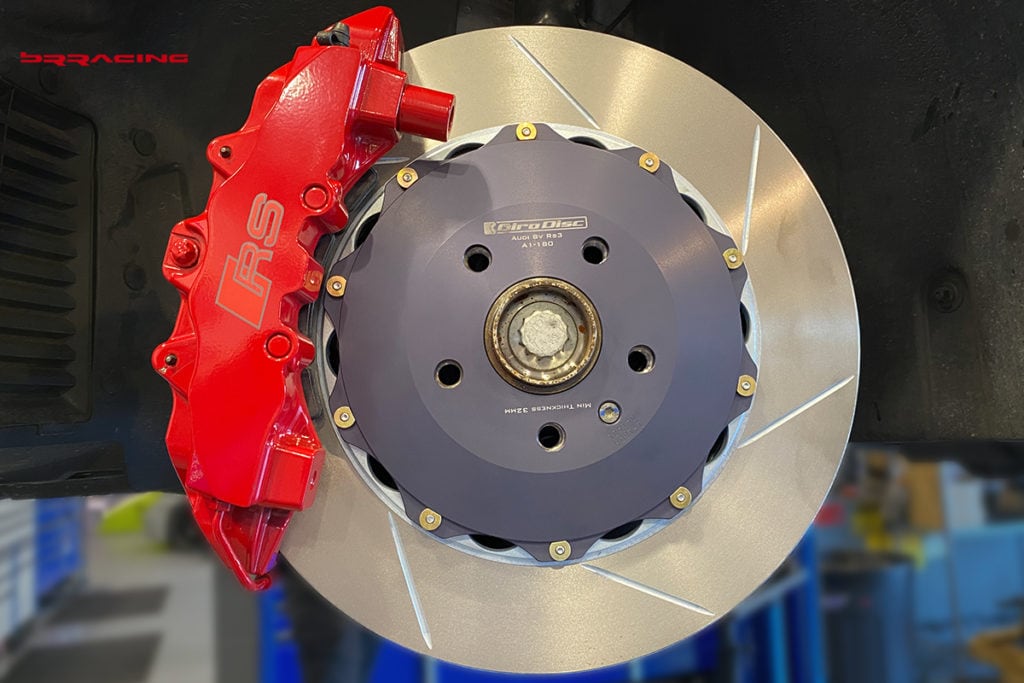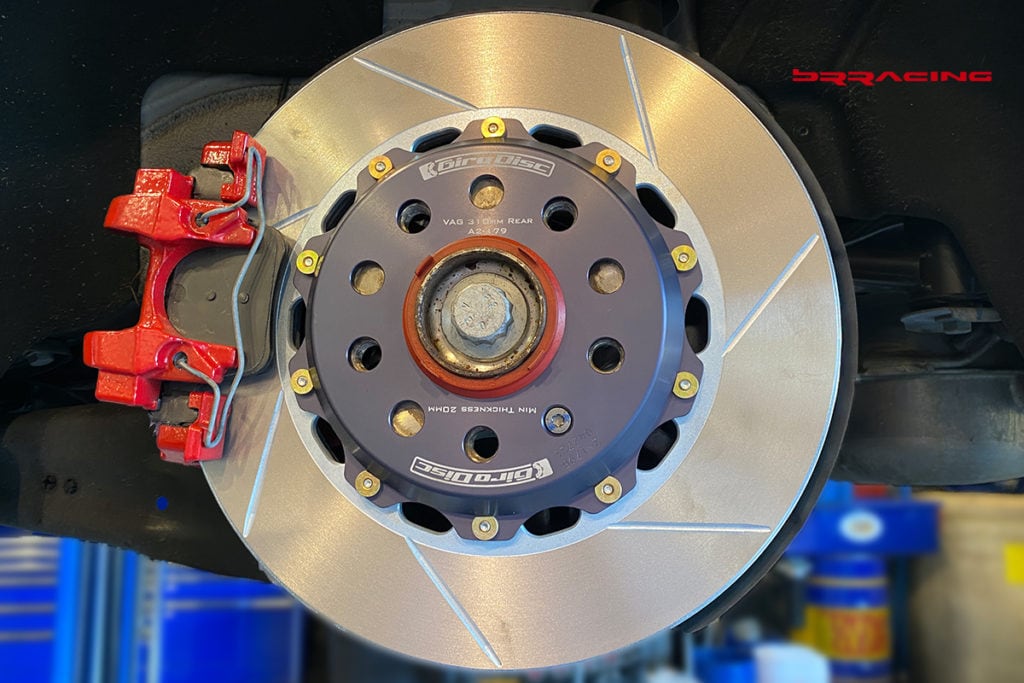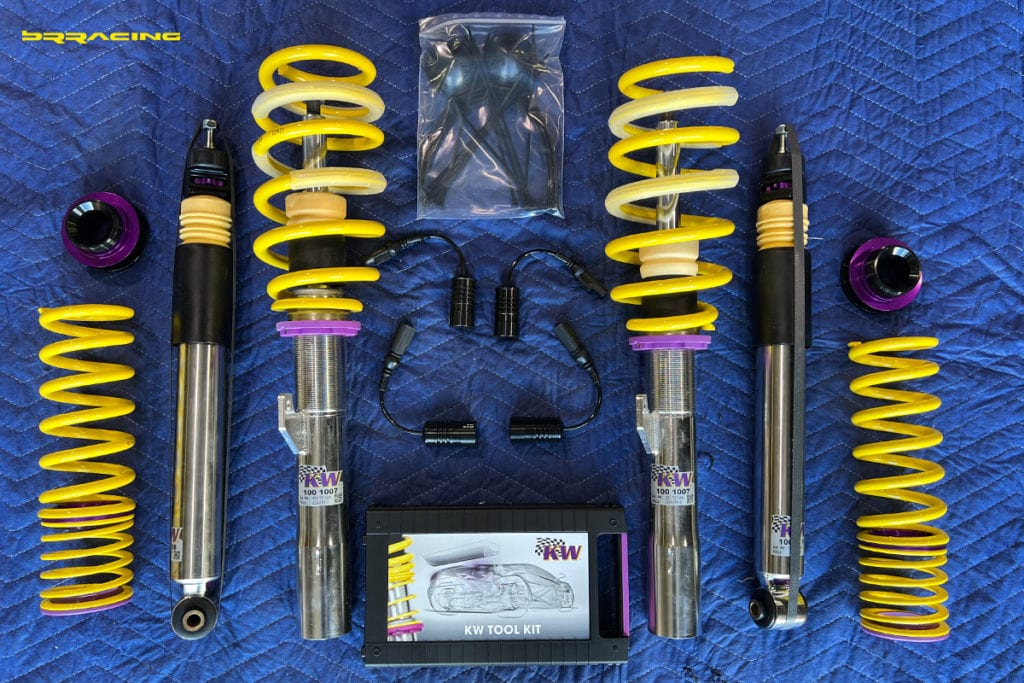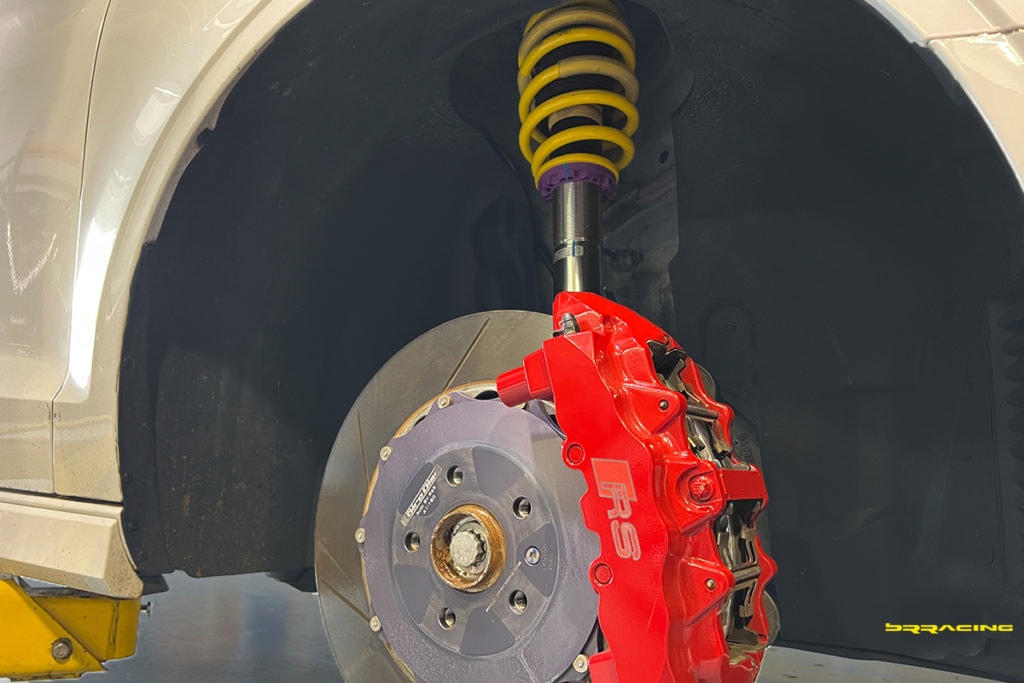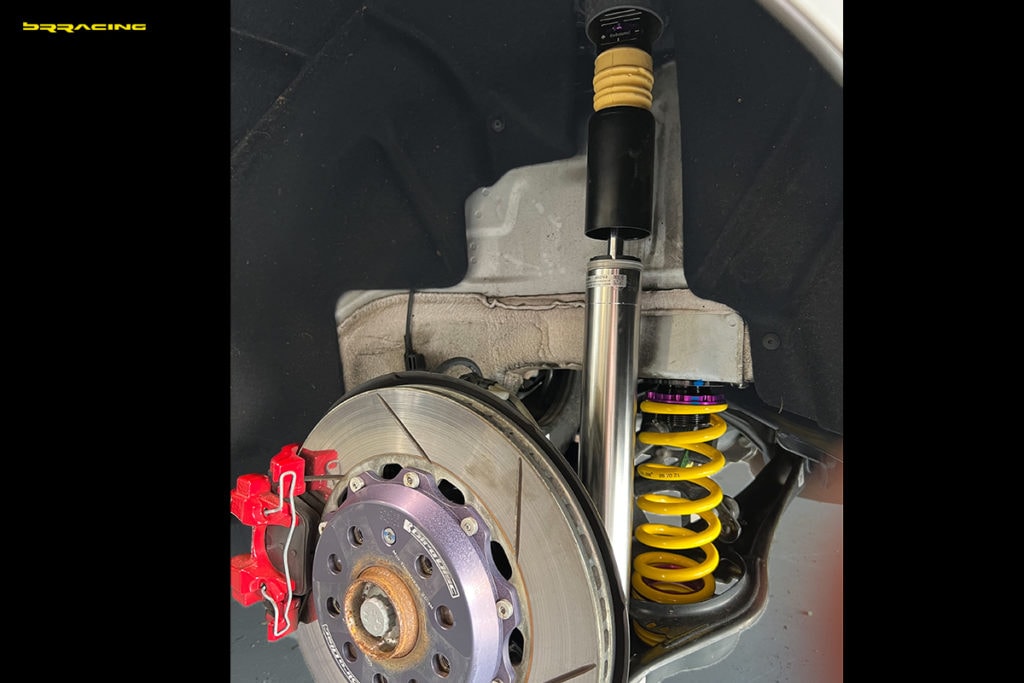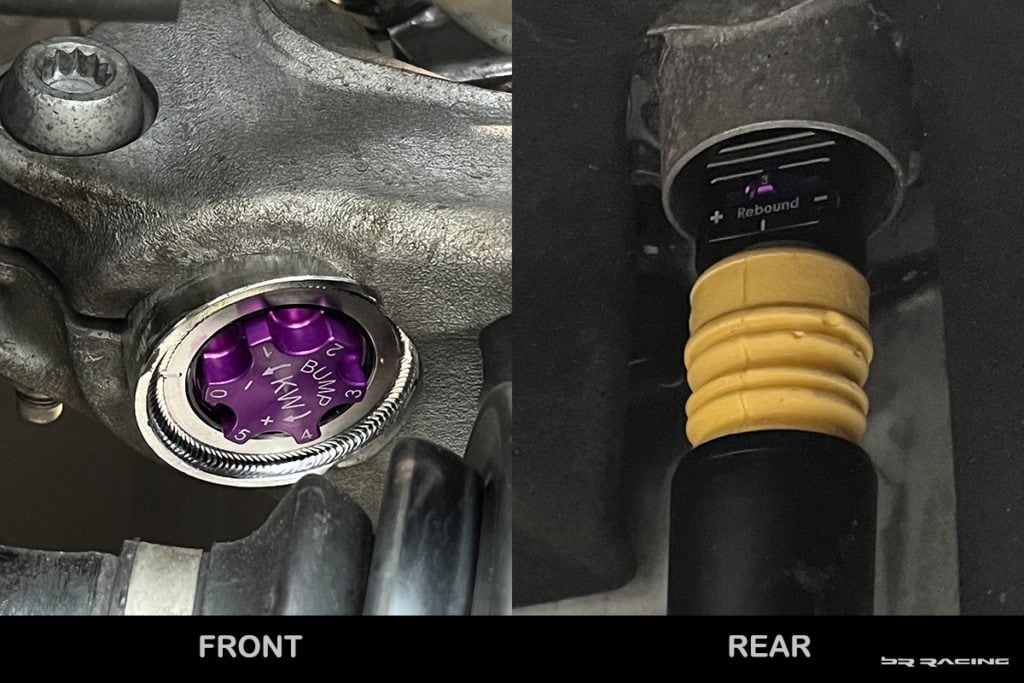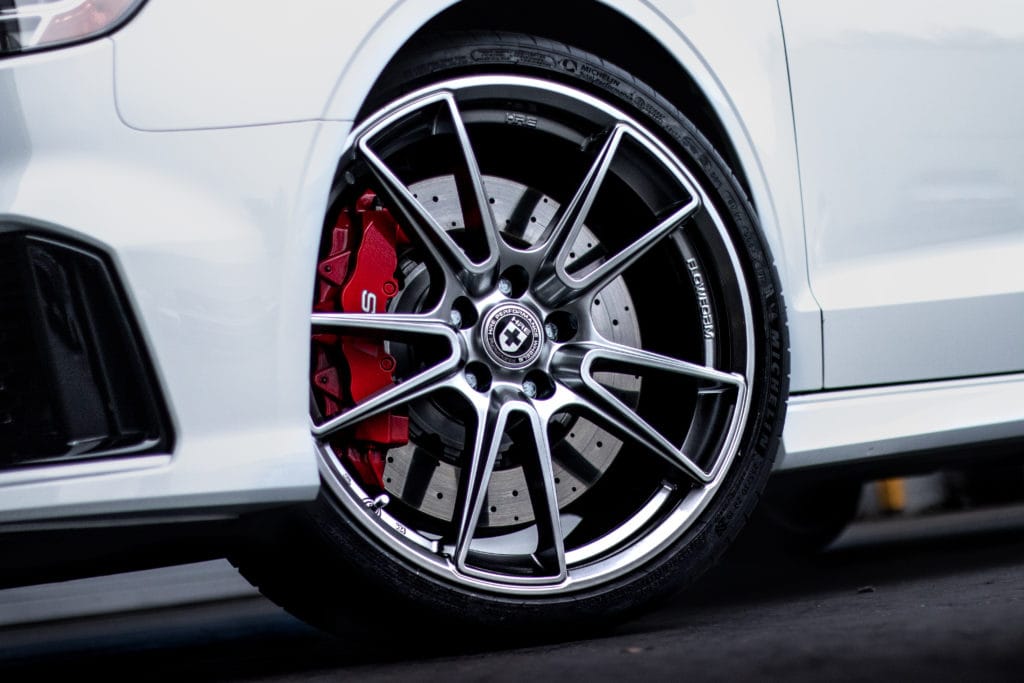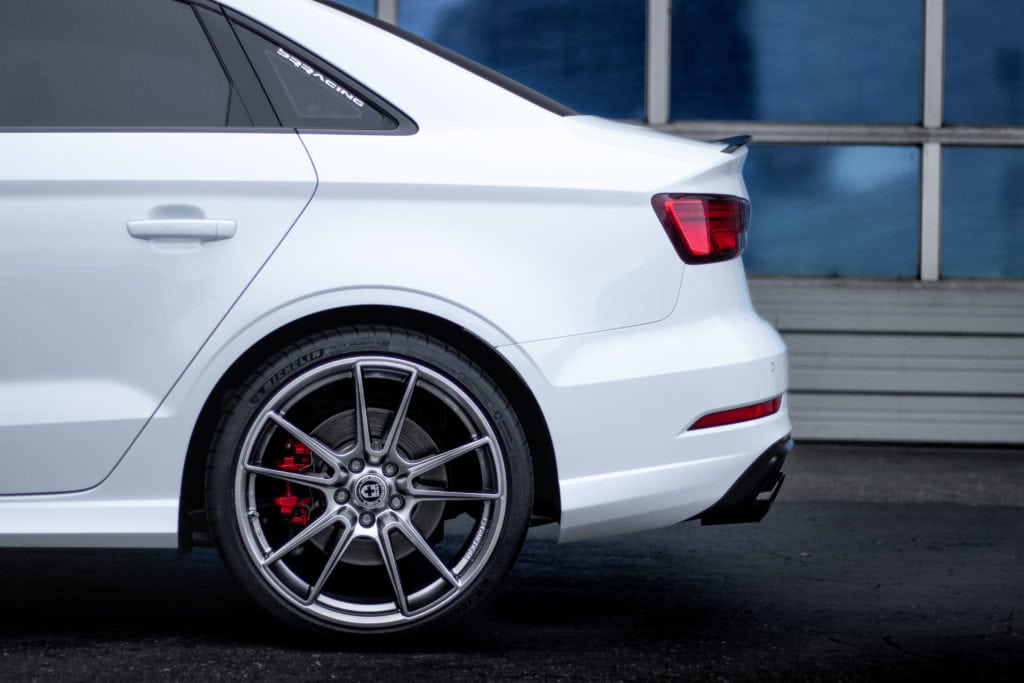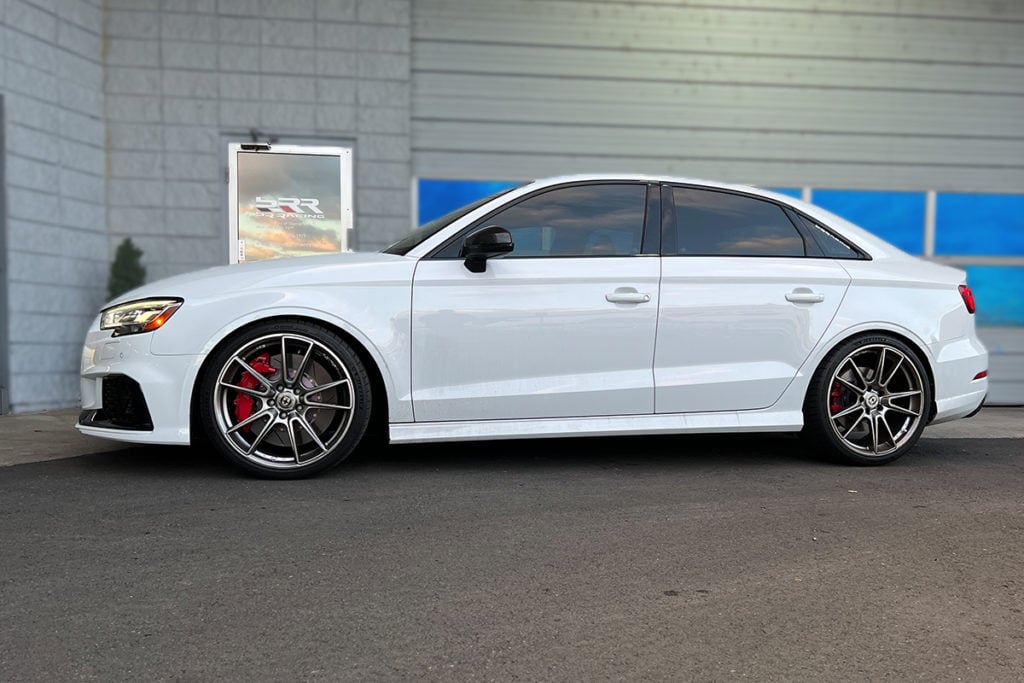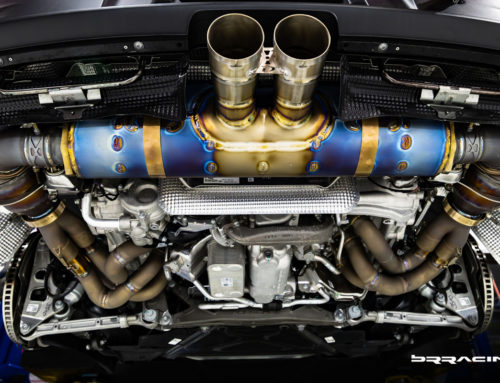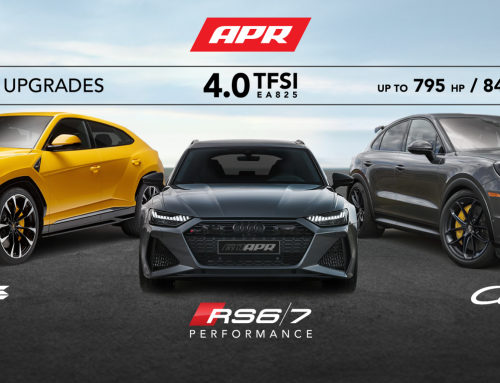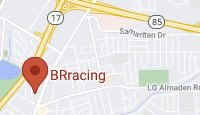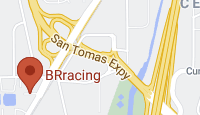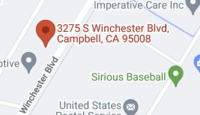When we do a project car at BRracing, often we’re looking for cars that with a slate of upgrades, could pull their weight against much more expensive cars. The newer Audi RS3 (2018) to us offered just that….untapped potential. The RS3 had all the right pieces in the foundation – amazing engine (but oh so much more lying in wait), great looks, improved interior, much improved handling (for an Audi), and, four doors.
The upgrades for our Audi RS3 would touch all the normal upgrade boxes: engine, suspension, brakes, wheels, tires, exhaust.
ENGINE
The Audi RS3 offers a turbo based, 5 cylinder, 2.5L engine. In base form, it puts out about ~ 400HP. Sort of like cutting an Audi R8 V10 in half. The engine makes a wonderful sound, especially for a turbo engine. But the potential lies in the 5 cylinder engine block. This is a very robust, strong block, and one that just begs for more boost, more HP. And the normal engine upgrade tricks all work here….special engine software tune to increase power and boost, intercooler upgrade, intake upgrade (to feed the turbos more air since they are putting out more boost), throttle body upgrade (anything that can be done to upgrade in the incoming intake charge will provide nice benefits in this engine). We have customers who have taken this engine to over 1100HP…yes, you read that right, and we could go there, but you start to introduce other tradeoffs, and we wanted to increase power, a sleeper car intent, yet still make it a daily driver. If this car weren’t a California car, then the downpipe would be the other piece in the horsepower upgrade puzzle, but as we said, our objective was to maintain CA smog, daily driver attributes (more on the CA smog attributes later).
INTAKE
Their are a couple of nice intakes on the market now for the RS3. The best performing, and best looking, in our view was the Intergrated Engineering (IE) intake. Providing a true “cold air” solution, and leveraging the stock location of taking the cold air from in front of the radiator, this version increases the total incoming air flow. The air filter has been upgraded in size as well, offering the largest swept area of any intake on the market. Cold air, larger intake tubes to the filter, larger filter, vented air filter box, plus looking absolutely stunning in all gloss carbon fiber…it’s a great solution.
But, notice that reduction at the end of the intake…..we will address that.
TURBO INLET
So many times, we see upgrades that only go half way. They either think they are upgrading the solution (like putting an open air intake system, that actually reduces HP rather than improve it), or they do the intake, but don’t complete the flow all the way to the turbo. More or larger intakes mean the ability to support more intake flow…or more air to the turbo…but stopping at the air filter is only half the puzzle. There is the second half…from the air filter all the way to the turbo. There are several options on the market here for the RS3, and we chose the APR inlet. However, we then needed to adapt and make a solution to connect the IE intake to the APR inlet. We sourced a silicon hose and adapter to ensure the dimensions and flow remain unobstructed.
INTERCOOLER
Whenever you increase HP, you need to address the cooling side as well. Intercoolers play an important role in the game of increasing horsepower. The more you demand from the turbo, the more it gets hot, and therefore, transfers this heat to the charged air that will flow to the intake and engine. The hotter this air, the less dense it is. The less dense, then the less amount of fuel it can be fed. Conversely, if we can cool the incoming intake air charge, the more dense the air, the more dense, the more fuel we can feed the engine, and the more air / fuel we can feed, the more HP we generate. That’s the role the Intercooler plays….so, is there a difference in the intercoolers on the market? Yes, dramatically so. The case here is not just “bigger is better”. The real answer lies in the two key data elements…the ability to drop the incoming air temperature (delta T), and the ability to NOT drop the incoming pressure (delta P). We could dive into the details in the design of an IC and how the design influences or affects those two key attributes…Delta T and Delta P…but that’s not the purpose here. We just take those into consideration when selecting the pieces of the solution. Again, here we selected APR.
SOFTWARE / ENGINE TUNE
When we started this project, we didn’t think we would need to worry about the software side for CA smog. But, oh how things have changed. In July 2021, CA passed some major revisions to the smog laws. The most relevant change was that CA now does not allow, and can check and validate, any changes to the stock factory software. This has had a huge impact on the engine upgrade market here in CA. But, good for us, the software path we chose for our Audi RS3 project was APR. APR has a 91 octane, stock turbo, “tune” that is CA smog legal. So, we not only get the HP upgrade we want, and the reliability, but we get CA smog legal solution.
EXHAUST
In the old days (read before about the year 2000), exhaust upgrades were done for both performance (better flow) and sound. Ever since, the factories have sought all the elements of engine performance that will allow them to both improve performance, as well as improve fuel economy. The exhaust system was one of those low hanging fruits…and the factories have added better flowing exhausts ever since. Then, around 2012, the factories took it one step farther, and added “valvetronic” elements to the exhaust (a valve that control the exhaust flow thru the muffler, or, in many cases, allows it to bypass the muffler).
We liked the exhaust sound, tone of our stock RS3….but we wanted just a little more volume. Due to the CA smog laws, we couldn’t touch the catalytic convertor section or “down pipe”….but we could change the center section or the rear valvetronic muffler. We decided to take it one step at a time, and started w the replacement of the center section, where a mid-pipe resonator existed. 034 Motorsports had a replacement center section, no resonator, and large consistent exhaust pipe size for enhanced flow. This provided just the increase in overall sound that we wanted, and a small step in performance over stock.
BRAKES
This has been a problem area for most Audi’s for the last 10 years and more. Their brakes (on their sports cars, sports sedans) look impressive, but don’t work well, and don’t last. We own a large variety of Audi’s (Q3, Q5, A4, RS3, RS5), and the brakes are poor on all of them. The rotors warp (which in this day and age just should not happen), their calipers over heat when pushed hard.
We have tried various approaches on all of our Audi’s, including aftermarket stock rotor replacement, ECS 2-piece rotor replacement, and we were not happy with any of them. Thank goodness that in the case of our RS3 w the big Audi brakes, GiroDisc has come in with a solution. We use GiroDisc on hundreds of our customers cars, and they have been great. Bigger rotors, 2-piece, better metal in the rotors, and they last. Not only do you get a better brake solution, one that does not warp or fade, but financially, it also makes sense…a money saving upgrade…WOW.
The GiroDisc brake rotor upgrade often includes a brake caliper “spacer”, to move the caliper out, as the GiroDisc rotors are often bigger than the stock rotors. Sort of like getting a “big brake upgrade” without having to pay the price. However, since the rotors are larger, care needs to be taken to ensure that the larger brakes will fit inside the wheels. In our case, we are running aftermarket wheels (see notes later), that do clear the larger brakes.
SUSPENSION
This, surprisingly, has been the hardest element to solve for our Audi RS3. This would seem so simple, we have done thousands of suspension upgrades, and you would think it would just be plug and play. However, the stock suspension has some inherent limitations when you try to achieve some of the normal upgrade elements…..like lowering the car. The geometry of the suspension does not allow for much lowering, and the front strut length is short, which then limit how you go about the lowering of the car for both looks and handling.
Our first approach was to install a simple set of “sport springs”. The car is equipped w EDC (electronic dampening control, or electronic shocks), and the sport springs worked OK, but didn’t achieve the results we desired. We didn’t get the car to the ride height we desired…it was still too high. And the ride suffered. So, not a “win – win”, more like a “lose – lose” upgrade.
We wanted to go with Ohlins R&T coil-overs (in our view, for the dual personality car, these are the best in the market). However, when we reviewed the specific specs for our car, due to the shock design of the Ohlins, we would not get the desired ride height we wanted.
We then tried another known approach…swapping out the EDC controller for a DSC software controller. We have used this on many other cars (mostly w our Porsche customers), as this is a software module that we can interact with, and make shock valving / profile changes via a software user interface. It allows you to set the software to different settings when the car suspension options are selected…you get a shock profile for each suspension option. We normally then make the comfort mode softer than stock, for around town, freeway driving. We then set Sport / Sport + to a firmer setting, when the car is really going to be pushed hard. We kept playing w the software, the “maps”, and couldn’t get the handling to be what we desired.
So, on to another more traditional approach. If we can’t get the electronic shocks to work, then we would go with mechanical shocks. As mentioned above, our first choice would the Ohlins R&T, but they would not work well for this car. We then looked at the other two more popular choices (Bilstein PSS10 / B16) or the KWv3. In the past, we would stay away from the KW’s, as the rear shock was normally designed with the rear shock adjuster hidden, no way to access once installed, which completely defeats the purpose of having adjustable shocks. However, for the RS3, KW has altered the rear shock design, and lowered the location of the shock adjuster, so that it can be reached from the rear wheel well. KW has always produced good quality products, and while the KWv3 is only a single adjustable shock, the matching of their shock valving w their springs provided an excellent solution. We got the ride height where we wanted, still have the shock travel needed for our roads, and got the adjustment in the shock to settle the handling down. Implementing the KWv3 also meant we needed to eliminate the EDC portion, so, installed a set of KW EDC delete modules.
ANTI-ROLL BAR / SWAY BAR
One of the interesting aspects of the RS3 is the tire sizes. The car comes with a larger front tire (width), and smaller rear tire. Most Audi’s, especially the “quattro” versions, are known for significant understeer when pushed hard. With the RS3, Audi tried to dial some of the understeer out by fitting the larger front tires….and it helped. But not quite enough to make the handling neutral. Therefore, to assist in the adapting of the handling, we opted for a larger rear sway bar (adding a larger front sway bar would only make the handling worse). 034 Motorsport had a rear, adjustable sway bar for the Audi RS3, so in it went. With the adjustability of the suspension plus now the adjust ability of the larger rear sway bar, we could dial in the handling to make the car near neutral.
WHEELS
The objective with the wheel upgrade was straightforward. We wanted a good looking wheel, light weight, strong, and providing the clearance for larger brakes. That would lead us to two wheel options: either forged or flow-formed. We have had great results w the HRE Flow Formed wheels, so we reviewed the options, styles, fitments, and selected the HRE FF10, in 19″ diameter.
RESULTS
We have an amazing car….lots of power (around 550HP currently…we had taken the car as high as over 1000HP, and we have several RS3 customers all playing w 1,000HP or more, but this is really only for those who are looking for a drag racing type solution), a sleeper appearance, but one that can play with almost anyone. Handling, brakes, looks, power / acceleration….at a great price.
